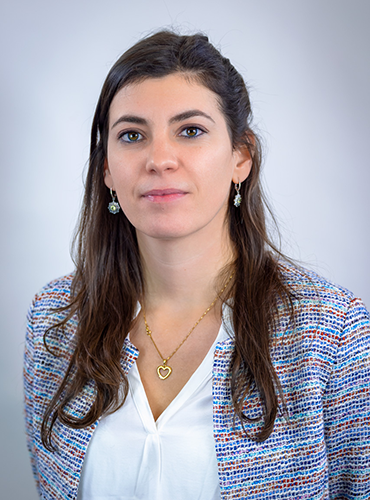Delphine Clara Zemp
Clara Zemp est professeure assistante et directrice du laboratoire de biologie de la conservation à l'université de Neuchâtel. Ses recherches se situent à l'interface entre la biodiversité, le climat et l'utilisation des terres et visent à orienter les stratégies de conservation de la biodiversité face aux changements globaux. [Cf thématiques de recherche ici.]
Avant de rejoindre l'université de Neuchâtel, elle travaillait à l'université de Göttingen en Allemagne en tant que chercheuse et coordinatrice scientifique de l'expérience d'enrichissement de la biodiversité dans les plantations de palmiers à huile. Cette plateforme de recherche interdisciplinaire fait partie du plus grand réseau mondial d'expériences sur la biodiversité (TreeDivNet) et appartient au centre de recherche collaboratif sur les « Fonctions écologiques et socio-économiques des systèmes de transformation des forêts tropicales humides de plaines (Sumatra, Indonésie) » (EFForTS).
Au cours de son doctorat à l'Institut de Potsdam pour la recherche sur l'impact climatique (PIK) en Allemagne, elle a étudié les interactions entre la végétation et le climat en Amazonie, en utilisant une approche innovante des réseaux complexes. Elle a passé 6 mois au Brésil à l'Institut national de recherche spatiale (INPE) et à l'université de São Paulo (USP). Elle a obtenu un doctorat par l'université Humboldt de Berlin en 2016, puis une bourse de recherche pour démarrer son projet sur les effets de la déforestation sur la résilience de la forêt amazonienne.
Nominations
2021 –: Professeure assistante avec pré-titularisation en Biologie de la conservation, Université de Neuchâtel, Suisse
2016 – 2020: Postdoc et chargée de cours, Biodiversité, Macroécologie et Biogéographie, Université de Göttingen, Allemagne
2016: Postdoc, Analyse du système Terre, Institut de Potsdam pour la recherche sur l'impact climatique (PIK), Allemagne
Services professionnels
Membre du Conseil scientifique du Forum biodiversité suisse (Académie suisse des sciences naturelles)
Co-directrice du Swiss Young Network for Science Policy and Diplomacy (Jeune académie suisse)
Membre du Conseil scientifique du programme TRAILS [Innovative Planting Designs for Wildlife, Climate and Livelihoods] en Malaisie
Co-directrice du Master en Conservation de la Biodiversité (Université de Neuchâtel)
Formation
2015: Thèse de doctorat “Vegetation-rainfall feedbacks in the Amazon region: a complex network approach”, Université Humboldt de Berlin, Allemagne
2012: Ingénieure Agronome / géomatique en environnement et aménagement , Institut National Polytechnique de Toulouse, France
2008: Classes préparatoires aux Grandes Écoles, École Nationale de Chimie Physique Biologie, Paris, France
Séjours de recherche à l'étranger
Vietnam (stage, 6 mois), Norvège (stage, 6 mois), Brésil (doctorat, 6 mois), Indonésie (postdoc, 2 ans)
Prix et distinctions
2017 : Highlights dans la revue Nature pour son article publié dans Geophysical Research Letters
2015 : Prix Merian de la Société européenne d'écologie tropicale (GTÖ)
2014 : Choix de l'éditeur pour son article publié dans la revue Europhysics Letter
2013 : Prix de mémoire de fin d'étude de la fondation Xavier Bernard de l'Académie d'Agriculture de France
Dans les médias
2023:
‘Tree islands’ give oil-palm plantation a biodiversity boost (nature.com)
Tree islands boost biodiversity in oil-palm plantations (nature.com)
Ramener de la diversité dans des monocultures de palmiers à huile, c’est possible - Le Temps
Un Master en conservation de la biodiversité à Neuchâtel (rts.ch)
Avant 2023:
Phänomen Amazonas-Regenwald: Droht der Kollaps?(klima:neutral - YouTube)
Oil palm plantations in Sumatran watershed worsen flooding in communities (mongabay.com)
Wie kann man den Bösewicht Palmöl naturfreundlicher machen? (WDR Radio)
Wie kann man den Palmölanbau ökologischer und sozialer machen? (WDR Radio)
Fewer trees mean less rain for the Amazon basin : Research Highlights (nature.com)
Intact forests crucial to Amazon ecosystem resilience, stable climate (mongabay.com)
Adapt to a changing Amazon now, or pay far higher price later, experts say (mongabay.com)
Vicious circle of drought and forest loss in the Amazon (pik-potsdam.de) [see also Science Times, ScienceDaily, DW ]
selection de publications
Liste complète disponible sur Google Scholar
Zemp, D. C., Guerrero-Ramirez N. et al. (2023) Tree islands enhance biodiversity and functioning in oil palm landscapes, Nature, 618, 316–321
Montoya-Sánchez, V. M., Kreft, H., Arimond, I., Ballauff, J., Berkelmann, D., Brambach, F., Daniel., R, Hines, J., Hölscher, D., Irawan, B., Krause, A., Polle, A., Potapov, A., Sachsenmaier, L., Scheu, S., Sundawati, L., Tscharntke, T., *Zemp, D. C. & *Ramirez, N. R. G. (2023). Landscape heterogeneity and soil biota are central to multi-taxa diversity for oil palm landscape restoration. Commun Earth Environ 4, 209 (*Joint senior authors)
Zemp, D.C & Gérard, A. Hölscher, D, Ammer, C., Irawan, B., Sundawati, L., Teuscher, M., Kreft, H. (2019) Tree performance in a biodiversity enrichment experiment in an oil palm landscape, Journal of Applied Ecology, doi: 10.1111/1365‐2664.13460.
Zemp, D.C, Ehbrecht, M., Seidel,D., Ammer, C., Craven, D., Erkelenz, J., Irawan, B., Sundawati, L., Hölscher, D., Kreft, H. (2019) Mixed-species tree plantings enhance structural complexity in oil palm plantations, Agriculture, Ecosystems and Environment, 283, 106564.
Zemp, D. C., Schleussner, C.F., Barbosa, M. J., and Rammig, A. (2017) Deforestation effects on Amazon forest resilience. Geophysical Research Letters, 44, doi:10.1002/2017GL072955.
Zemp, D. C., Schleussner, C.F., Barbosa, M. J., Hirota, M., Montade, V., Sampaio, G., Staal, A., Wang-Erlandsson, L. and Rammig, A. (2017) Self-amplied Amazon forest loss due to atmosphere-vegetation feedbacks. Nature Communications, doi:10.1038/ncomms14681.

Delphine Clara Zemp
Directrice de laboratoire
Professeure assistante
+41 32 718 31 14
Office A013
Rue Emile-Argand 11
2000 Neuchâtel
Suisse

